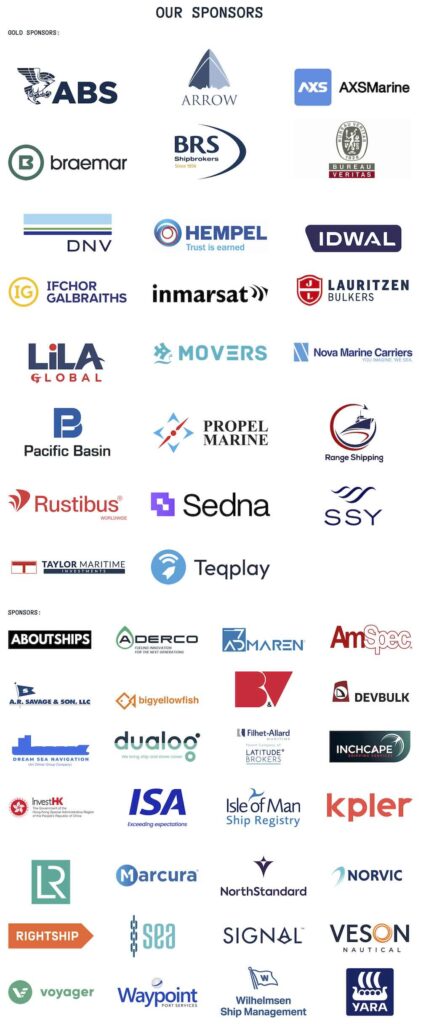The intricacies of minor bulks analysed at Geneva Dry

Minor bulks might account for 40% of dry bulk seaborne movements, but thanks to their massive fragmentation they receive “frustratingly” less coverage than the likes of coal and iron ore.
Fragmentation, larger ships, and altered cycles formed much of the debate during the minor bulks session at Geneva Dry held at the President Hotel Wilson in Switzerland earlier this month.
“Minor bulks are the only trade which have the flexibility and adaptability to minimise ballast voyages,” said moderator Punit Oza, founder of Singapore consultancy Maritime NXT, in his opening remarks, going on to describe the ships working in these trades as “unsung heroes and work horses”.
“There’s a lot of uncertainties these days on the markets, a lot of macro and geopolitical events. No one knows where the market will be in three to six months,” said Emilie Nourry, head of shipping at France’s Eramet, the world’s largest producer of high-grade manganese ore worldwide, operator of the largest nickel mine in the world as well as being Europe’s largest lithium producer.
Nourry described how shipping cycles had become shorter with less clear seasonality, with geopolitics and inflation responsible for much of today’s volatility in the smaller ship sizes. To counter this, Eramet is trying to shift to bigger ships wherever feasible.
Discussing the difficulties of fragmentation and moving cement, Willem Vermaat, shipping director at Heidelberg Materials Trading, one of the world’s largest cement producers, told delegates: “We’re less popular than many of the the majors. We’re a little bit more dirty cargoes, so the owners, if they have a choice, their first choice would probably be carrying grains or at least cleaner cargoes. That’s one of the major challenges if the market goes up, we quickly see that the owners change focus to the cleaner cargoes.”
You’re never going to be a price setter even with market power
Alexander Slee, deputy CEO at London-listed shipowner Taylor Maritime Investments, argued that scale in terms of fleet size can be a differentiator in a market segment made up of so many small fleets.
“One shouldn’t overstate the the market power you have by having 50 rather than 20 ships or whatever, you’re never going to be a price setter, but it’s more in terms of attracting good people – both onshore and at sea, and having control over costs because at the end of the day that’s what we have most control of,” Slee said.
Olivia Lennox-King, chief operating officer at Hong Kong owner Cetus Maritime, discussing the consolidation seen in the handy space over the past year, said this was in part driven by customers looking for stability in their trading partners at a time of heightened disruption and uncertainty.
Nevertheless, the market remains highly fragmented, she said, something that often leads to a “dogfight” for cargoes.
The panel all discussed the gradual supersizing witnessed within the handy sector.
“Within the minor bulk geared sectors, there’s been a move from smaller handies to larger handies, from handymax to supras and ultras,” recounted Slee from Taylor Maritime, noting significant port upgrades in China and India.
Nevertheless, he was adamant demand for smaller ships would remain strong.
“There are lots of new ports being built that cater for smaller vessels that are closer to source up rivers all over the world,” he pointed out.
Questions then followed from the audience including one asking whether the panel was frustrated at the lack of markets coverage for minor bulks compared to larger ship segments such as capesizes.
“Yeah, I find that quite frustrating,” admitted Lennox-King. Anyone wanting to do research on what’s happening in a specific minor bulk trade really has to dig around on their own, she said.
“It’s a reflection on how difficult it is to model minor bulk,” said Slee, pointing out that to research the trade correctly requires studying thousands of different trade routes and different commodity trade flows.
“And at the end of the day,” he said,” you probably might be none the wiser. So I think that’s why so often one resorts to just general statements about GDP growth being the main drivers for minor bulk.”
Geneva Dry, the world’s premier commodities shipping conference returns on April 28 and 29 next year with delegate passes being limited to just 800. Tickets are now on sale here.

